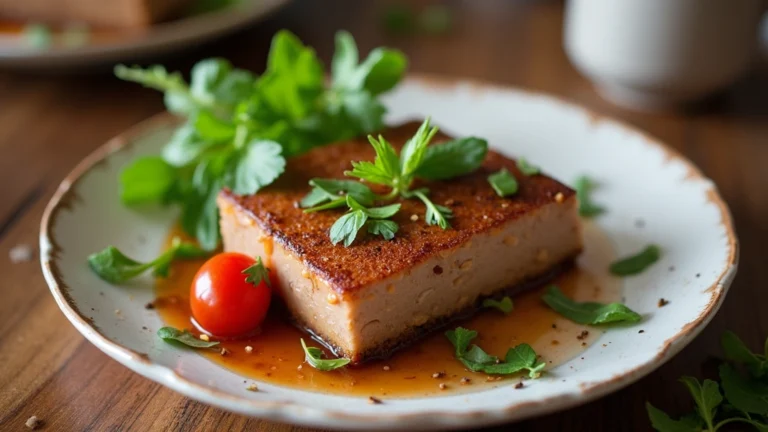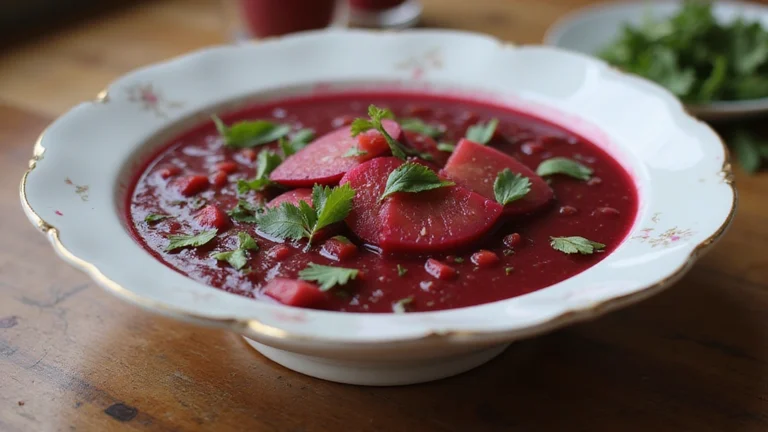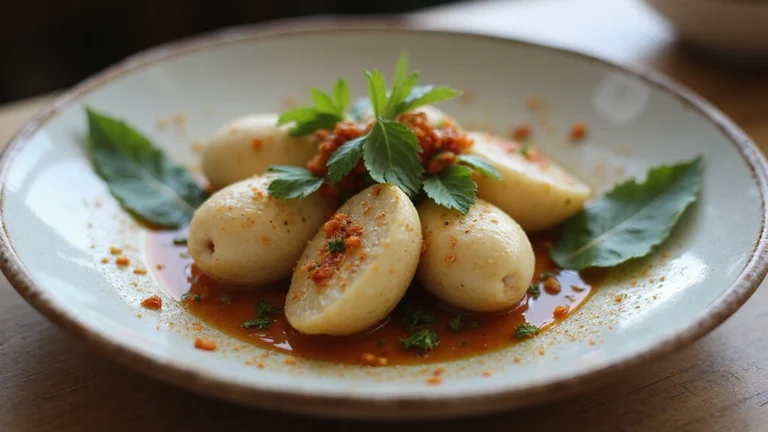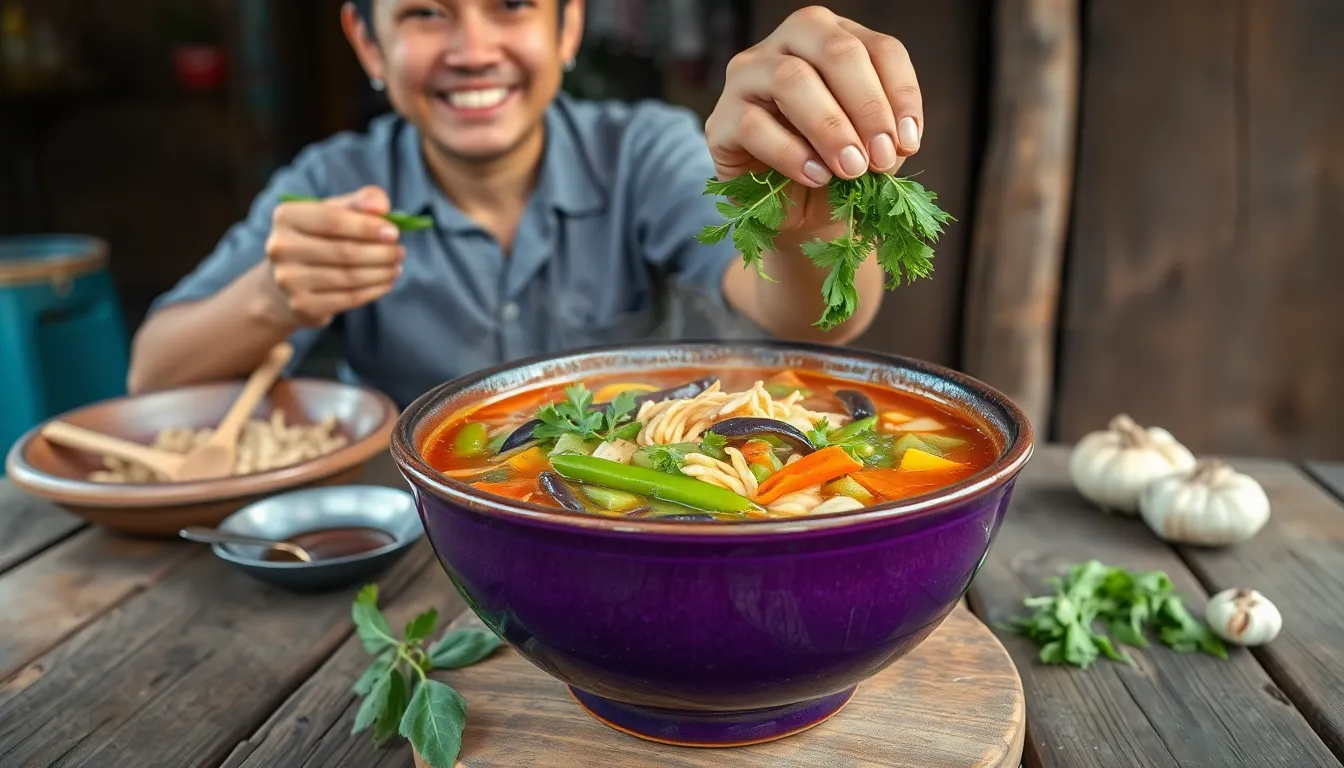
Looking for a Lao soup recipe that’ll transport your taste buds to Southeast Asia? This authentic dish combines aromatic herbs, tender proteins, and a rich broth that’s both comforting and exotic.
Lao soup, known locally as “kaeng” or “gaeng,” forms the backbone of Laotian cuisine. Unlike its Thai or Vietnamese counterparts, Lao soups typically feature a more rustic preparation with bold flavors of lemongrass, galangal, and kaffir lime leaves. You’ll find the balance of sour, spicy, and savory elements creates a depth that’s uniquely Laotian.
Whether you’re seeking comfort food for a chilly evening or wanting to explore Southeast Asian cuisine, this Lao soup recipe delivers authentic flavors with ingredients you can find at most Asian markets. The combination of fresh herbs and slow-simmered broth makes this dish truly special.
What Is Lao Soup?
Lao soup or “kaeng” represents the heart and soul of Laotian cuisine with its distinctive combination of aromatic herbs and bold flavors. Traditional Lao soups differ from their Thai or Vietnamese counterparts through their rustic preparation methods and less refined appearance yet deliver an explosion of authentic tastes.
The foundation of any proper Lao soup begins with a meticulously prepared broth usually simmered with bones chicken pork or fish to extract maximum flavor. Lemongrass galangal and kaffir lime leaves form the aromatic base that gives these soups their signature fragrance. Fresh ingredients like long beans eggplant bamboo shoots and various foraged vegetables add substance and regional character.
What truly sets Lao soups apart is their flavor profile that perfectly balances sour spicy and savory elements. Padaek (fermented fish sauce) provides umami depth while lime juice or tamarind paste contributes essential sourness. The heat level varies widely from family to family but most authentic versions incorporate bird’s eye chilies for that characteristic warmth.
Lao soups serve both practical and cultural purposes in Laotian households. During hot seasons lighter versions provide hydration and essential nutrients while heartier varieties sustain families through cooler months. These soups remain central to everyday meals often enjoyed with sticky rice and communal side dishes that complement the flavorful broth.
Regional variations exist throughout Laos with northern recipes featuring more forest herbs and mushrooms while southern preparations might incorporate coconut milk or additional seafood. Even though these differences all authentic Lao soups share the fundamental characteristic of being incredibly flavorful while using simple humble ingredients.
Key Ingredients for Authentic Lao Soup
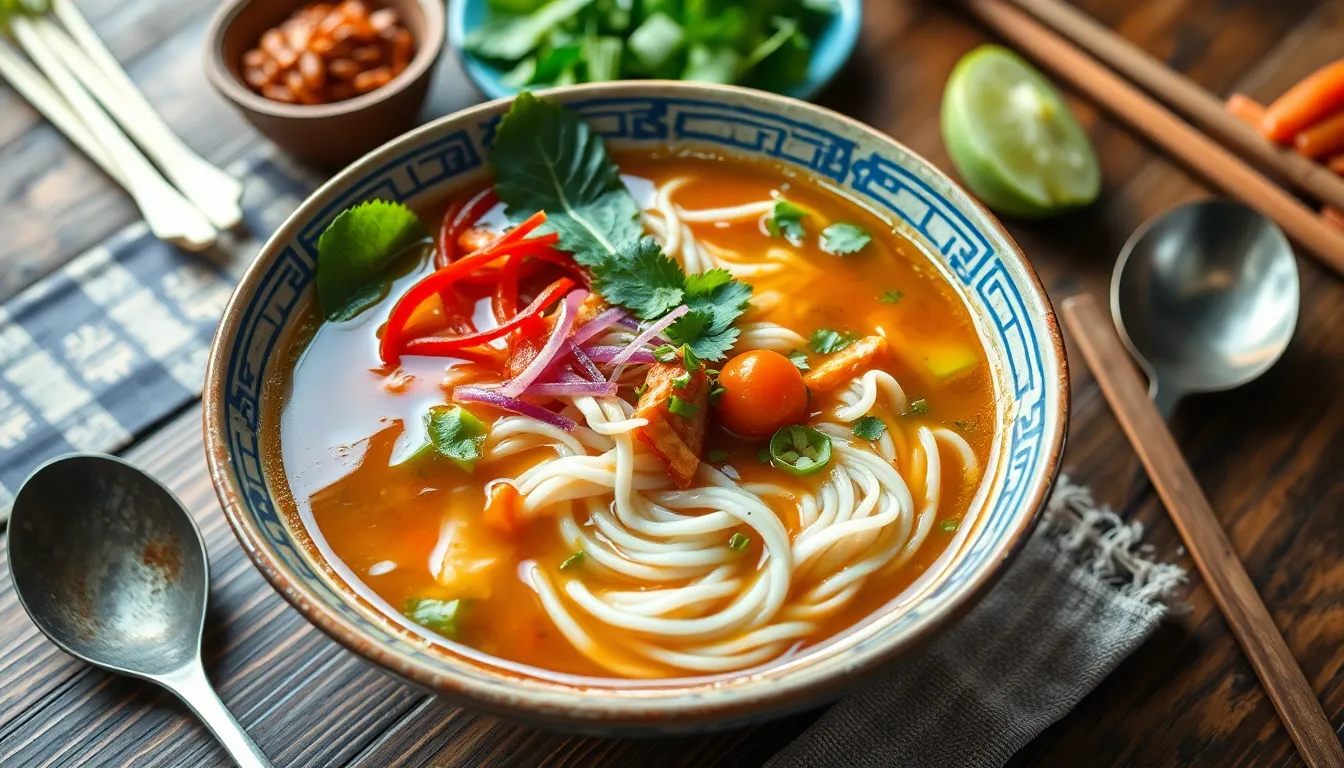
Creating an authentic Lao soup requires exact ingredients that form the foundation of its distinctive flavor profile. These essential components work together to achieve the perfect balance of savory, sour, and aromatic elements that make Lao soups so beloved.
- Broth Base: Start with chicken stock or pork broth, simmered for hours to develop rich, deep flavors that form the foundation of your soup.
- Rice Noodles: Use chewy, handmade rice noodles especially for Khao Piak Sen (traditional Lao chicken noodle soup) to provide satisfying texture.
- Fish Sauce: Add this crucial umami component to season your soup and enhance its savory depth.
- Lime Juice: Incorporate fresh lime juice to bring bright acidity that balances the rich savoriness of the broth.
- Chilies: Include green chilies or bird’s eye chilies to provide the characteristic gentle heat that defines authentic Lao soups.
- Padaek: This fermented fish sauce is unique to Laotian cuisine and delivers a complex umami foundation unlike any other ingredient.
Traditional Herbs and Aromatics
The soul of Lao soup lies in its aromatic profile, created through a careful combination of herbs and aromatics:
- Lemongrass: Use whole stalks or gently pound them to release their citrusy, fragrant notes that infuse the entire broth.
- Ginger: Add sliced or crushed ginger for a warming, slightly spicy aroma that complements the broth beautifully.
- Kaffir Lime Leaves: These distinctive leaves contribute bright, citrusy flavor that cannot be substituted with regular lime.
- Cilantro (Coriander): Use both the roots for simmering in the broth and the leaves as fresh garnish to add layers of herbal qualities.
- Green Onions and Shallots: Incorporate these for sweetness and mild pungency; fried shallots make an excellent garnish for added texture.
- Garlic: Add crushed cloves to the broth or use fried garlic as a topping to build savory depth.
- Mint: Finish your soup with fresh mint leaves for a cool herbal balance that refreshes the palate.
- Galangal: This essential rhizome offers a sharper, more citrusy flavor than ginger and is crucial for authentic Lao flavor profiles.
Protein Options
Lao soups accommodate various proteins, each bringing unique characteristics to the final dish:
- Chicken: The most common protein choice, used either as whole pieces in Sua Gai style or as thinly sliced breast meat in noodle soups like Khao Piak Sen.
- Pork: Particularly pork belly and spareribs add wonderful richness to soups like Gang Nor Mai (Bamboo Soup), where the fat renders into the broth for additional flavor.
- Fish: While less common than chicken or pork, fish provides a lighter option that works well with the bright, aromatic herbs in the broth.
- Tofu: For a vegetarian alternative, firm tofu absorbs the flavorful broth while adding protein to your soup.
The protein you select will influence the overall character of your Lao soup, though the aromatic foundation remains consistent across variations. Most traditional recipes rely on chicken or pork for their depth of flavor and cultural significance in Laotian cuisine.
Equipment Needed
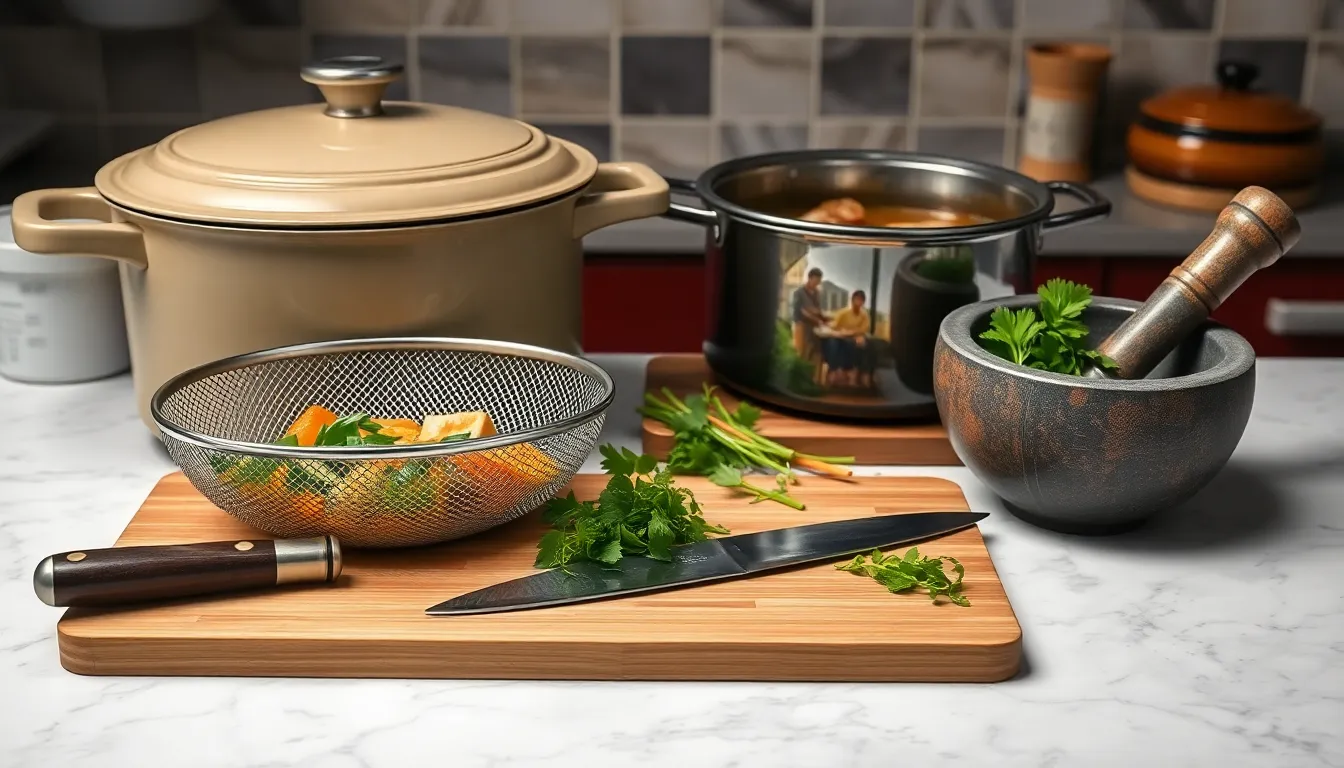
Preparing authentic Lao soup requires several essential kitchen tools to achieve those complex flavors and proper textures. Stock your kitchen with these items before starting your culinary journey:
- Large Dutch oven or stock pot – Critical for simmering bone broths for Khao Piak Sen or Khao Poon for extended periods while maintaining consistent heat
- Fine mesh strainer – Necessary for achieving a clear broth by removing aromatics and impurities
- Sharp chef’s knife – Essential for precise cutting of lemongrass stalks galangal and other aromatics
- Medium-sized mixing bowl – Required for preparing fresh rice noodle dough when making Khao Piak Sen
- Wooden spoon or heat-resistant spatula – Perfect for stirring and scraping the pot bottom without scratching
- Cutting board – Provides adequate surface for preparing vegetables herbs and proteins
- Mortar and pestle – Traditional tool for crushing herbs and spices to release their essential oils and flavors
- Measuring cups and spoons – Ensures accurate proportions of seasonings like fish sauce and spice pastes
- Slotted spoon – Helpful for removing chicken or other proteins from the broth when needed
- Small bowls – Useful for organizing prepared garnishes and toppings like bean sprouts cilantro and lime wedges
Your soup preparation will flow smoothly when you gather these tools beforehand. Traditional Lao soup recipes like Khao Poon or Gang Nor Mai benefit from proper equipment that allows flavors to develop fully while making the cooking process more efficient.
How to Make Lao Soup

Creating authentic Lao soup at home requires attention to detail and layering of flavors. Follow these steps to create a comforting bowl of Khao Piak Sen or other traditional Lao soups that balance savory depth with aromatic brightness.
Preparing the Broth
Start your Lao soup journey by building a rich, flavorful broth. Pour chicken broth and water into a large pot over medium heat. Add minced garlic, sliced onions, chopped shallots, and a thick slice of fresh ginger to create an aromatic base. Enhance the umami depth by incorporating chicken powder, mushroom seasoning, and a few dashes of fish sauce. Season with salt to taste, then allow everything to simmer for at least 30 minutes, letting the flavors meld together.
For a simpler version, bring water and chicken stock to a rolling boil in a large pot. Add salt to season the liquid, then introduce thinly sliced chicken breast alongside bruised lemongrass stalks and split green chilies. Maintain a gentle simmer until the chicken cooks through completely. Elevate the broth’s complexity by preparing a separate aromatic paste – brown minced garlic, chili, and lemongrass in hot oil until fragrant, then stir this mixture into your simmering soup for an immediate flavor boost.
Adding Proteins and Vegetables
Introduce your chosen protein to the simmering broth. Traditional Lao soups typically feature chicken – either breast meat or whole chicken pieces with bones for added flavor. Submerge the chicken completely in the broth and cook until tender and fully done, approximately 15-20 minutes. Remove the chicken pieces from the pot, shred or slice them thinly, then return the meat to the soup.
Fresh vegetables add brightness and textural contrast to your Lao soup. Morning glory (water spinach) makes an excellent addition, wilting slightly in the hot broth while maintaining some crispness. Prepare fresh herbs such as cilantro and green onions, chopping them coarsely to release their aromatic oils. These herbs can be added directly to the soup or served alongside as garnishes, allowing diners to customize their bowls according to personal preference.
Final Seasoning Adjustments
Balance your soup’s flavor profile with final seasoning adjustments. Add fish sauce for saltiness and depth, then brighten everything with freshly squeezed lime juice. The acidity from the lime cuts through the richness of the broth, creating the characteristic tangy note that defines many Lao soups. Stir in freshly chopped coriander and mint leaves just before serving to release their essential oils and aromas.
Top each bowl with crispy fried garlic, a drizzle of chili oil for heat, and additional sliced green onions for color and freshness. Serve your Lao soup piping hot alongside a basket of sticky rice, which traditionally accompanies the meal and can be used to soak up the flavorful broth. This combination creates an authentic Lao dining experience that highlights the cuisine’s perfect balance of savory depth, aromatic herbs, subtle heat, and refreshing acidity.
Serving Suggestions

Lao soups transform from simple broths to complete and satisfying meals with the right accompaniments and presentation. You can elevate your homemade Lao soup experience by following these traditional serving methods that Laotian families have practiced for generations.
Traditional Accompaniments
Sticky rice serves as the foundation of any authentic Lao soup meal. Unlike regular steamed rice you’ll find with most Asian cuisines sticky rice is eaten by hand and used to scoop up or soak in the flavorful broth. The slightly sweet glutinous texture perfectly balances the savory depth of soups like Gang Nor Mai or Tom Kai Gai.
Fresh vegetables provide necessary contrast to the warm soup creating a complete meal with varied textures and temperatures. Arrange a platter of leafy greens bean sprouts sliced cucumbers or local herbs alongside your soup bowl. Regional varieties of Lao soup might be paired with grilled meats such as Larb or chicken skewers that complement the smoky undertones in certain broths.
For breakfast versions like Khao Piak Sen the noodle soup becomes the star attraction typically served piping hot with rice noodles that have simmered in fragrant chicken broth. This morning staple provides comfort and sustenance to start the day with robust flavors from the carefully prepared aromatics.
Garnishes
Fresh herbs transform Lao soups from simple to spectacular with their bright aromatic qualities. Sprinkle generous amounts of cilantro green onions Thai basil or mint leaves over your soup just before serving. These herbs contribute not only visual appeal but also release essential oils that enhance the overall flavor profile.
Sliced chili peppers allow each diner to adjust the heat level according to personal preference. Place a small dish of thinly sliced bird’s eye chilies or other local varieties on the table so guests can customize their soup experience. The vibrant red color of the chilies also adds visual appeal to the finished dish.
Lime wedges provide the crucial sour element that defines authentic Lao cuisine. Serve several wedges alongside each bowl allowing diners to squeeze fresh juice directly into their soup. This tangy citrus note brightens the rich broth cutting through fatty elements and balancing the complex flavor profile. For an even more authentic presentation include small dishes of fish sauce padaek or chili paste for additional customization options.
Storage and Make-Ahead Tips

Lao soup like Khao Piak Sen can be conveniently prepared ahead of time without sacrificing its authentic flavors. Proper storage techniques ensure you can enjoy this comforting dish whenever the craving strikes.
Preparing Components in Advance
The flavorful broth serves as the foundation of Lao soup and benefits from advance preparation. You can make the broth up to five days ahead and store it in the refrigerator, allowing the complex flavors to develop even further over time. Prepare garnishes like fried garlic and shallots beforehand as well, storing them in airtight containers at room temperature to maintain their crispy texture.
Storing Leftovers Properly
Keep the components of your Lao soup separate for optimal freshness. Store the broth in an airtight container in the refrigerator while placing the tapioca noodles in a ziplock bag to prevent them from becoming soggy. This separation technique preserves the distinct textures that make Khao Piak Sen so satisfying.
Freezing for Later Use
For longer storage options freeze the broth in airtight containers or freezer bags for up to three months. When using freezer bags:
| Freezing Tips | Details |
|---|---|
| Fill Level | Leave 1-2 inches of space for expansion |
| Storage Method | Lay bags flat for thin stackable layers |
| Organization | Label with date and contents |
| Thawing Efficiency | Flat frozen portions thaw more quickly |
While noodles can be frozen they may lose some of their signature chewiness after thawing so preparing fresh noodles is preferable when possible.
Reheating Techniques
Reheat the broth gently on the stovetop over low heat to preserve its aromatic qualities. For the noodles dip them briefly in boiling water to refresh their texture or add them directly to the hot broth just before serving. This method revitalizes the components while maintaining the authentic character of your Lao soup.
Regional Variations of Lao Soup
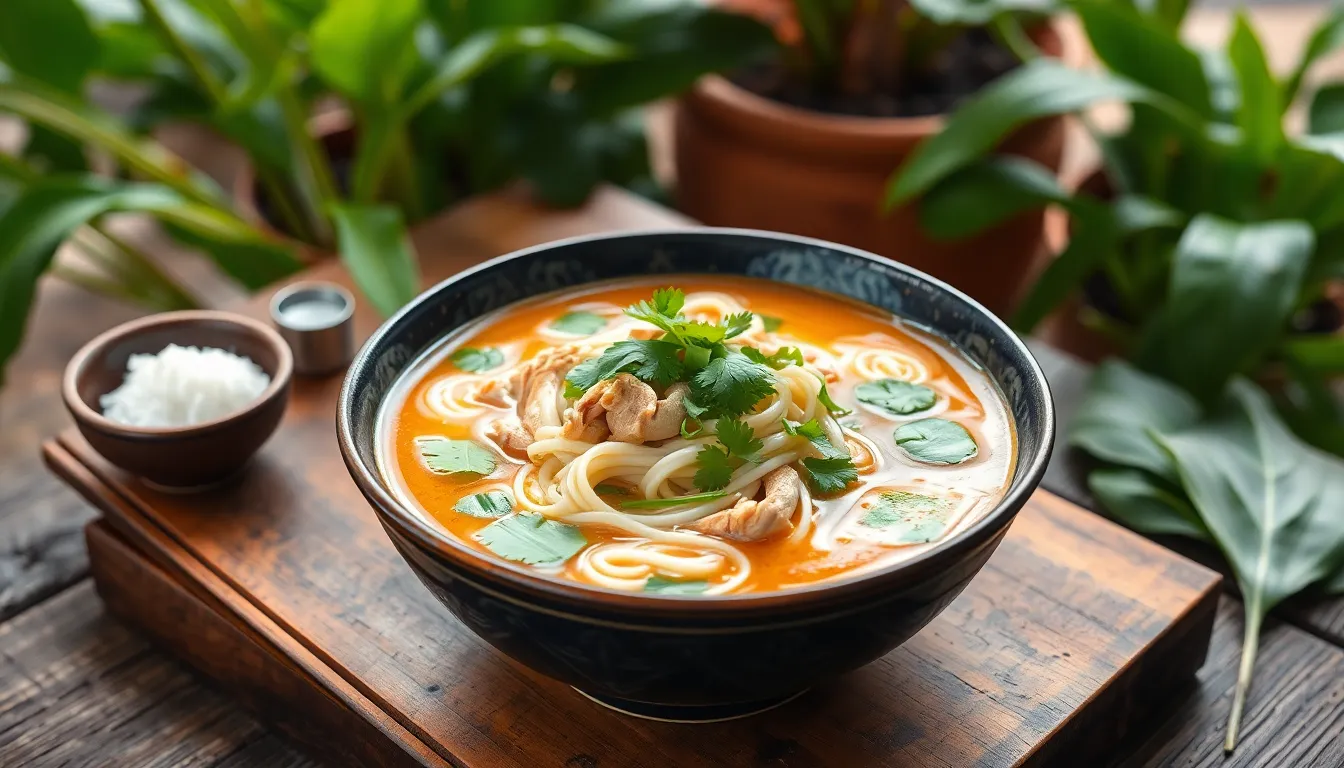
Lao soup traditions vary dramatically across different regions of the country reflecting local ingredients cultural influences and traditional cooking methods. These regional variations showcase the remarkable diversity within Laotian cuisine while maintaining the core principles of balance freshness and bold flavors.
Northern Lao Soups
Northern Laos produces distinctive soups characterized by their herbaceous profiles and unique fermented elements. The star of northern Lao soup cuisine is Khao Soi a hearty rice noodle soup built on a chicken bone broth foundation. What sets northern Khao Soi apart is the inclusion of thua nao a fermented soybean-tomato sauce that undergoes extensive fermentation to develop its intensely complex flavor profile. This signature ingredient originates near the Chinese border in Muang Sing and contributes a distinctive pungency that defines northern Laotian soups. Fresh wide-cut rice noodles form the base while toppings typically include scallions cilantro and water spinach for contrasting textures and brightness. Northern soups generally feature more subtle spicing with greater emphasis on fermented flavors and foraged forest ingredients including wild mushrooms and mountain herbs.
Southern Lao Influences
Southern Laotian soups embrace bolder flavor profiles with noticeable influences from neighboring Thailand and Cambodia. Tom Kai Gai exemplifies southern Lao soup traditions with its fragrant broth balancing pronounced spice levels with abundant fresh herbs. The south’s proximity to Thailand brings coconut milk into many soup recipes creating richer more luxurious textures compared to northern counterparts. Khao Piak Sen represents another beloved southern specialty featuring a deeply spiced broth and flat rice noodles typically served with accompanying chili paste and herbs that diners add according to personal preference. Gaeng Pa or jungle curry soup showcases the vibrant southern approach to soup-making with its medley of vegetables fresh herbs turmeric and liberal use of chili. Southern Laotian soups typically incorporate more aromatics create deeper spice complexity and offer pronounced heat levels reflecting the region’s cultural connections to its southern neighbors.
Health Benefits of Lao Soup

Traditional Lao soup isn’t just a culinary delight – it’s packed with nutritional benefits that have supported Laotian health for generations. The unique combination of fresh ingredients and aromatic herbs creates a dish that nourishes both body and soul.
Medicinal Properties of Ingredients
Yanang leaves form the foundation of many traditional Lao soups like Gang Nor Mai and offer remarkable health advantages. These leaves are typically extracted by rubbing or blending since they’re too fibrous to eat directly. Research shows yanang leaves help reduce fever, lower blood pressure, regulate blood sugar in diabetics, and provide antibacterial effects.
Aromatic herbs found in Lao soups deliver powerful health benefits:
- Lemongrass contains citral compounds that reduce inflammation
- Galangal offers antioxidant properties similar to ginger
- Kaffir lime leaves aid digestion and respiratory health
- Chili peppers boost metabolism and contain capsaicin that may reduce pain
Fresh vegetables like bamboo shoots and kabocha squash contribute essential vitamins and dietary fiber to Lao soups. These ingredients not only enhance flavor but also improve your overall nutrient intake with each spoonful.
Nutritional Profile
A typical serving of Lao bamboo soup (approximately 240 grams) provides a balanced nutritional profile:
| Nutrient | Amount |
|---|---|
| Calories | 144 |
| Protein | 5.8 grams |
| Fat | 4.8 grams |
| Carbohydrates | 19 grams |
| Dietary Fiber | 3.8 grams |
Lao soups also contain important amounts of calcium, iron, and potassium – minerals essential for bone health, oxygen transport, and proper muscle function.
Additional Health Benefits
The slow-simmered broth often prepared with bones releases collagen and essential minerals during cooking. This nutrient-rich liquid supports joint flexibility and promotes skin health while providing a deeply satisfying flavor base.
Digestive health improves with regular consumption of Lao soup. The combination of aromatic herbs stimulates digestive enzymes while the warm broth soothes the digestive tract. Many ingredients in traditional recipes contain compounds that reduce inflammation throughout the body.
Immune function gets a important boost from Lao soup ingredients. The antimicrobial properties of herbs like lemongrass and galangal help your body fight common infections while providing comfort during illness – explaining why these soups remain popular remedies during cold and flu season.
Final Thoughts: Enjoying the Flavors of Laos in a Bowl
Lao soup represents more than just a meal—it’s a journey through the heart of Southeast Asian culinary tradition. With its perfect harmony of aromatic herbs vibrant vegetables and rich broth this dish embodies the essence of Laotian food culture.
By making Lao soup at home you’re not only creating a delicious meal but also embracing centuries of tradition that values both flavor and wellness. The beauty lies in its adaptability—whether you prefer northern herbaceous profiles or southern bold tastes you’ll find a version that speaks to your palate.
Next time you’re craving something both comforting and exotic grab your mortar and pestle simmer that fragrant broth and transport yourself to Laos one spoonful at a time. Your taste buds will thank you.
Frequently Asked Questions
What makes Lao soup unique compared to other Southeast Asian soups?
Lao soup (kaeng) is distinguished by its perfect balance of sour, spicy, and savory flavors. What makes it truly unique is the use of padaek (fermented fish sauce) for umami depth, along with aromatic ingredients like lemongrass, galangal, and kaffir lime leaves. Unlike other regional soups, Lao soup often features foraged vegetables and emphasizes rustic preparation methods that highlight the natural flavors of simple, humble ingredients.
What are the essential ingredients needed for authentic Lao soup?
Authentic Lao soup requires a rich broth base (typically made with bones), aromatic herbs (lemongrass, galangal, kaffir lime leaves), padaek (fermented fish sauce), lime juice or tamarind paste for sourness, and fresh vegetables like long beans, eggplant, or bamboo shoots. Proteins vary from chicken and pork to fish or tofu. For complete authenticity, include bird’s eye chilies for heat and garnish with fresh herbs like cilantro and green onions.
How long does it take to make traditional Lao soup?
Traditional Lao soup typically takes 2-3 hours to prepare properly. Most of this time is dedicated to simmering the broth with bones to extract maximum flavor and nutrients. The actual preparation of vegetables and aromatics takes about 30 minutes. For quicker versions, using pre-made broth can reduce cooking time to about 45 minutes, though the depth of flavor may not match the slow-simmered traditional approach.
Is Lao soup spicy?
The spice level in Lao soup varies between families and regions. Traditionally, bird’s eye chilies are used to add warmth rather than overwhelming heat. While many authentic versions do have a noticeable spicy kick, the heat is balanced by sour and savory elements. Home cooks can easily adjust the spice level by adding more or fewer chilies according to personal preference without compromising authenticity.
What equipment do I need to make Lao soup at home?
Essential equipment includes a large Dutch oven or stock pot (at least 6-quart capacity) for simmering broth, a fine mesh strainer for clarity, a sharp chef’s knife for ingredient prep, a cutting board, mixing bowls, and measuring cups. For truly authentic preparation, a mortar and pestle helps release essential oils from herbs and spices. Most home kitchens already have these basics, making Lao soup accessible to prepare.
Can I make Lao soup vegetarian or vegan?
Yes, Lao soup can be deliciously adapted for vegetarian or vegan diets. Replace the bone broth with mushroom or vegetable broth enhanced with soy sauce for umami. Instead of padaek (fermented fish sauce), use fermented soybean paste or miso for depth. For protein, incorporate tofu, tempeh, or mushrooms. Keep the essential aromatics like lemongrass and galangal to maintain authentic flavor while simply omitting animal products.
What are the health benefits of Lao soup?
Lao soup offers impressive health benefits, including joint support from collagen-rich broth, immune-boosting properties from aromatic herbs like lemongrass and galangal, and digestive benefits from its warming spices. Traditional ingredients like yanang leaves help reduce fever and lower blood pressure. A typical serving provides balanced nutrition with moderate calories, healthy protein, and essential minerals like calcium and iron, while the combination of herbs offers anti-inflammatory and antioxidant benefits.
How is Northern Lao soup different from Southern varieties?
Northern Lao soup typically features more forest herbs, mushrooms, and wild vegetables, creating an herbaceous, earthy profile with subtle bitterness. Southern Lao soups tend to incorporate coconut milk, seafood, and tropical ingredients, resulting in richer, sweeter, and often spicier broths. Despite regional differences, both styles maintain the characteristic balance of sour, savory, and spicy flavors that define Laotian cuisine.
What’s the best way to store leftover Lao soup?
Store leftover Lao soup in airtight containers in the refrigerator for up to 3 days. For best results, separate noodles from the broth before refrigerating to prevent them from becoming soggy. When reheating, bring the broth to a simmer before adding the noodles back in. Lao soup also freezes well (without noodles or fresh herbs) for up to 3 months—perfect for making larger batches.
What should I serve with Lao soup?
Traditionally, Lao soup is served with sticky rice (khao niew) which is used to soak up the flavorful broth and eaten by hand. Complement the meal with fresh herbs like cilantro, mint, and Thai basil, lime wedges for adjusting sourness, and side dishes such as jeow (dipping sauce), tam mak hoong (papaya salad), or grilled vegetables. These accompaniments create an authentic Laotian dining experience.
